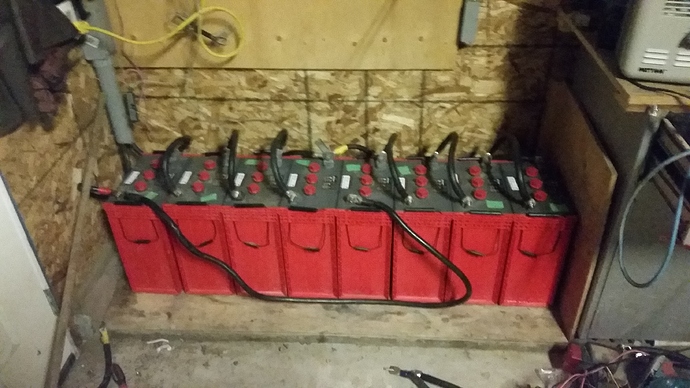Look. This is really very, very simple.
D.B. at 47 years has now decades seen his share of over-hyped, just around the corner, Tomorrow systems.
I am now turning 64 years old. Two MORE decades of over-hyped fuel-cells and such, that still ain’t here. And if/when come a Just-Tomorrow’s tech that comes into general use I would not touch until 10 years in world-wide services proven.
Some may wish to remain addicted to Popular Science, Popular Mechanics, Popular Electronics magazines over-hyped Worlds of Tomorrow. Not me. Grew up, and gave up that stuff by my late 20’s.
Here is what is real, now, today, usable past lead-acids.
The now evolved Nickel-Metal Hydrid cells. These are now developed as low, low self-discharging. With much reduced memory characteristics. Much safer recharge characteristics versus any lithium type cell.
Advanced NiMH are what Toyota uses in their Prius and other hybrid vehicles.
These are no longer 1980’s limited.
Advanced NiMH available now as AAA, AA, and D replacement cells. You will know the newer developed ones as packaged as pre-charged, and low discharge characteristics.
Every month I buget buy a few more pacs of Rayovac Pre-Charge Plus 900mAh, AAA cells. A few more pacs of EverReady Energizer 1500 mAh, AA cells.
I passed on the only 2000 mAh D cells from EverReady. Passed on the capabilities edge-treading specialty brands 8000 mAh, D cells. Buy from Battries-Plus pacs of Nuon brand middle-of-the-road 3000 mAh, D cells.
Yes. Yes. ALL made in China. Why you have to stick with brands, distributors who will care about quality control and returns rates.
Everything here now: headlamps, wireless remote controls, lanterns, flashlights, radios, ect, is getting changed out to these evolved NiMH’s now.
If I wanted to step up right now past lead-acid banks I would be going to hybrid car take-outs cell banks. Or, assemble my own banks from better 6000 mAh, D cells.
Yep. You will be into over 150 to 300 volt DC hairy-scary banks to get the toatal AH capacity. Have to learn charging banks like these. Feeding into existing inverters for your AC consumers usages.
All Today tech, now, proven, available.
That is what my now two Honda and Yamaha inverter-gnerators are about.
Teach ME the details
Regards - still alive, learning, and doing
Steve Unruh



